Disclosure: This article contains affiliate links. We may earn a commission from purchases at no extra cost to you, which helps our travel content.
The early morning mist hangs like a delicate veil over the savanna as our open-air vehicle rumbles to a halt. My friend's ten-year-old daughter Hannah gasps and points silently toward a clearing where a lioness and her three cubs are basking in the first golden rays of sunlight. The children's wide-eyed wonder mirrors my own first safari experience decades ago while covering a cricket tour in South Africa. There's something profoundly moving about watching youngsters experience their first wildlife encounter—a moment where textbooks and nature documentaries transform into breathing, moving reality. Having witnessed sporting spectacles across continents, I can confidently say that nothing compares to the authentic drama of a family safari in Kruger National Park, where nature writes the script daily and every game drive delivers a new storyline.
Planning Your Family Safari: When to Go and What to Expect
After accompanying numerous families to Kruger over the years, I've found spring (September to November) offers the perfect balance for a family safari. The moderate temperatures hover between 18-28°C (64-82°F)—comfortable enough for children who might struggle with the intense summer heat. The dry conditions mean vegetation is less dense, significantly improving wildlife visibility around waterholes.
The shoulder season also means fewer crowds and more competitive pricing, a crucial consideration for families watching their budget. During my most recent visit last October with my colleagues and their children, we enjoyed exceptional game viewing without the frustration of vehicle queues at sightings.
When planning, remember that Kruger is roughly the size of Wales or Israel—approximately 20,000 square kilometers. This vastness requires strategic planning, especially with children whose patience has natural limitations. I recommend focusing on the southern and central regions for first-time family safaris, particularly around Skukuza and Lower Sabie. These areas consistently deliver excellent wildlife density while offering well-developed infrastructure.
Before departure, prepare your children by investing in a good wildlife guidebook to build anticipation and knowledge. My friend's children created a homemade 'spotting journal' before our trip, which transformed game drives into exciting scavenger hunts as they checked off species.

💡 Pro Tips
- Book accommodations at least 9-12 months in advance for family-friendly rest camps
- Pack binoculars for each child—ownership increases engagement and reduces sharing disputes
- Download the official SANParks app for real-time sighting updates and interactive maps
Kid-Friendly Accommodations: From Rest Camps to Private Lodges
Accommodation choices in Kruger span a spectrum that can satisfy any family's comfort requirements and budget constraints. Having stayed in everything from basic camping to luxury lodges while covering sporting events and later as a cultural traveler, I've developed clear preferences for family safaris.
SANParks rest camps offer excellent value and authentic experiences. Skukuza, the park's largest camp, features family cottages with kitchen facilities, a shop for supplies, and a swimming pool—essential for children's midday entertainment when wildlife is least active. Lower Sabie, with its riverside setting, provides similar amenities with the added bonus of hippo viewing from the restaurant terrace. During our October visit, the children spent hours watching elephants and buffalo come to drink while we enjoyed sundowners.
For families seeking more comfort without the extreme luxury price tag, the SANParks-operated Satellite Camps like Tamboti Tented Camp offer an excellent middle ground. The permanent safari tents include proper beds and electricity while maintaining that magical connection to the bush sounds at night. My friend's children still talk about falling asleep to lion roars in the distance—a natural lullaby no urban experience can replicate.
If budget allows, private concessions within or bordering Kruger offer specialized family programs. Lodges like Jock Safari Lodge and Lukimbi Safari Lodge have tailored children's activities including junior ranger programs, bush cooking classes, and age-appropriate wildlife education. Their family suites often include interconnecting rooms, giving parents peace of mind while providing teenagers some independence.
Whichever accommodation you choose, I recommend packing a headlamp for each family member. These hands-free lights are invaluable for nighttime bathroom trips and reading after dark, especially in camps where lighting is minimal to reduce environmental impact.
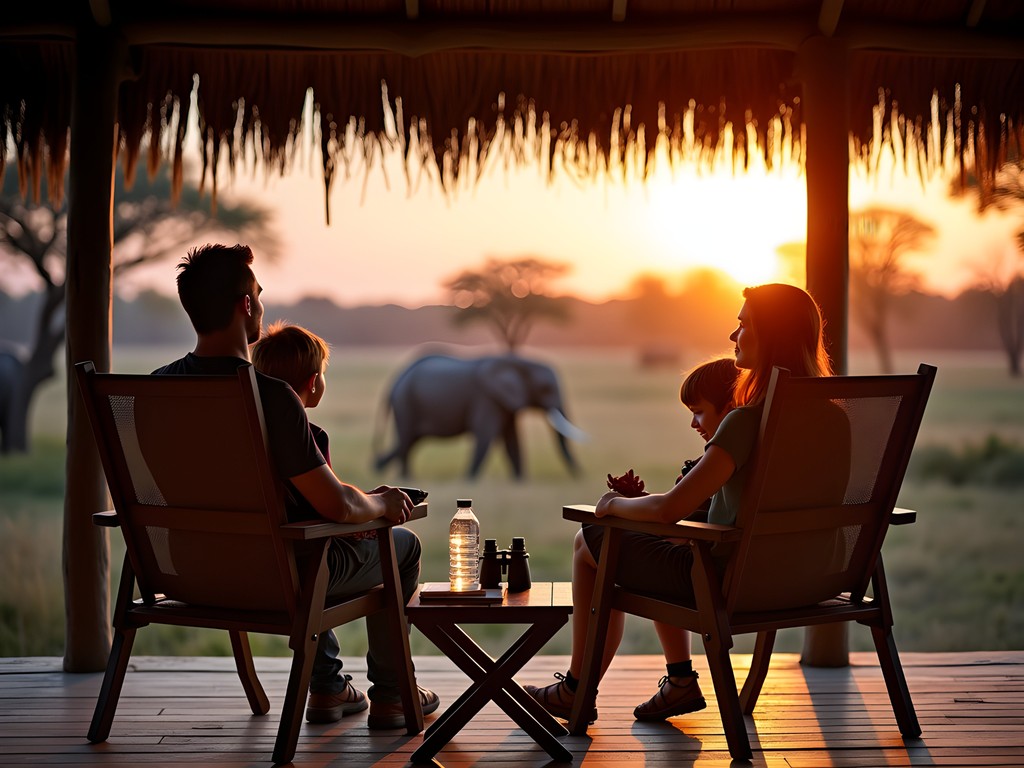
💡 Pro Tips
- Request ground-floor accommodations in rest camps if traveling with toddlers or mobility-challenged family members
- Book family cottages with kitchenettes to prepare simple meals and snacks for picky eaters
- Pack a small portable night light for children who might feel anxious about unfamiliar night sounds
Safari Activities That Keep Children Engaged
Maintaining children's interest during safaris requires thoughtful planning and variety. Having traveled with friends' families of various ages, I've collected strategies that transform potential restlessness into engaged enthusiasm.
The classic game drive remains Kruger's centerpiece activity, but timing is crucial with children. Rather than attempting the standard early morning (5:30 AM) and late afternoon drives daily, alternate between them to prevent exhaustion. Morning drives offer the best predator sightings, while afternoon drives culminating in sunset provide spectacular photography opportunities.
For children aged 6-12, I've found the SANParks Junior Ranger program invaluable. Available at major rest camps during school holidays, these 2-3 hour sessions include guided bush walks, animal tracking, and conservation activities specifically designed for younger visitors. The pride on Hannah's face when she earned her Junior Ranger badge reminded me of young cricketers receiving their first cap—a moment of achievement and belonging.
Self-driving between rest camps offers flexibility crucial for families. You can adjust your pace to match attention spans, stop for impromptu picnics at designated areas, and take bathroom breaks as needed. Invest in a good spotting scope that can be mounted on your vehicle window—this brings distant wildlife dramatically closer and can reignite waning interest instantly.
Incorporate technology thoughtfully. The 'Kruger Sightings' app lets children document their sightings and share them with the community. This gamification element kept my friends' teenagers engaged throughout our trip, competing for the most unusual sightings. Their digital nativity became an asset rather than a distraction.
Interestingly, I've noticed parallels between wildlife viewing and sports spectatorship. Just as cricket has its moments of dramatic action between periods of strategic positioning, safari drives feature intense wildlife encounters interspersed with quieter observation. Teaching children this rhythm—and how to appreciate the subtleties between major sightings—develops patience and observational skills that serve them well beyond the safari.
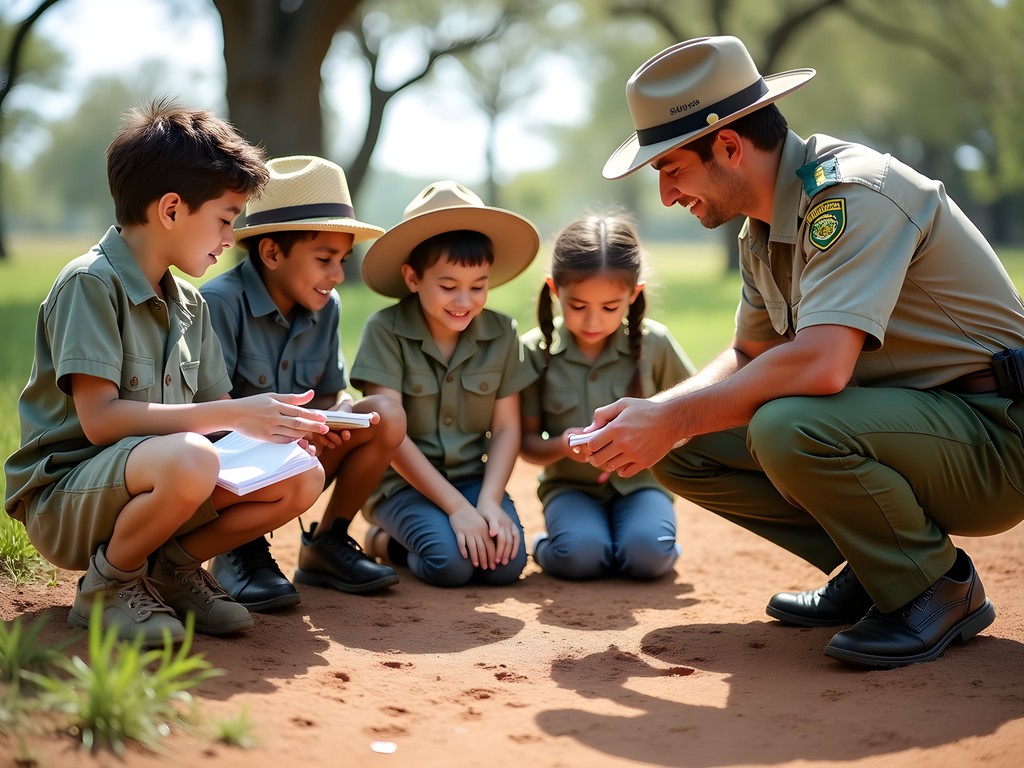
💡 Pro Tips
- Create wildlife bingo cards tailored to each child's age, with common animals for younger kids and more challenging species for teenagers
- Pack healthy snacks and plenty of water for game drives—hunger can quickly diminish enthusiasm
- Schedule downtime at camp pools during the midday heat when wildlife is least active
Wildlife Viewing with Children: Safety and Etiquette
Safety around wild animals requires constant vigilance, especially with excited children. During my years documenting sporting events in wildlife-rich regions, I've developed protocols that balance enthusiasm with necessary caution.
The fundamental rule we established with our young companions was simple: the vehicle is our protective boundary. No limbs outside windows, no standing up through sunroofs unless explicitly permitted by guides, and voices kept to excited whispers rather than shouts. I explain this to children using cricket fielding analogies—just as fielders must maintain specific positions for safety and effectiveness, safari viewers must respect boundaries with wildlife.
Teach children to recognize animal behaviors indicating stress or aggression. Elephant ear-flapping, rhino foot-scraping, or buffalo staring directly at the vehicle are warning signs to create distance immediately. During our recent trip, we witnessed a family ignoring their guide's instructions to remain seated, resulting in an elephant mock charge that terrified their children unnecessarily.
Binoculars transform the safari experience, especially for children who might otherwise struggle to spot distant wildlife. Rather than sharing adult equipment, invest in kids binoculars that are robust, properly sized for smaller faces, and designed to withstand inevitable drops. The ownership of personal viewing equipment creates pride and responsibility.
When encountering other vehicles at sightings, use the opportunity to teach children about patience and conservation ethics. Explain why we limit time at popular sightings, keep voices down, and never pressure animals for better viewing positions. These lessons extend beyond safari—they're fundamentals of respect for nature and others that apply universally.
Perhaps most importantly, manage expectations. Not every drive delivers the 'Big Five,' and children need to understand that unpredictability is part of wildlife's appeal. Some of our most memorable moments came from unexpected encounters—a chameleon crossing the road, dung beetles at work, or a vervet monkey family's complex social interactions. Teaching children to appreciate these smaller dramas develops naturalist thinking that enriches their experience.
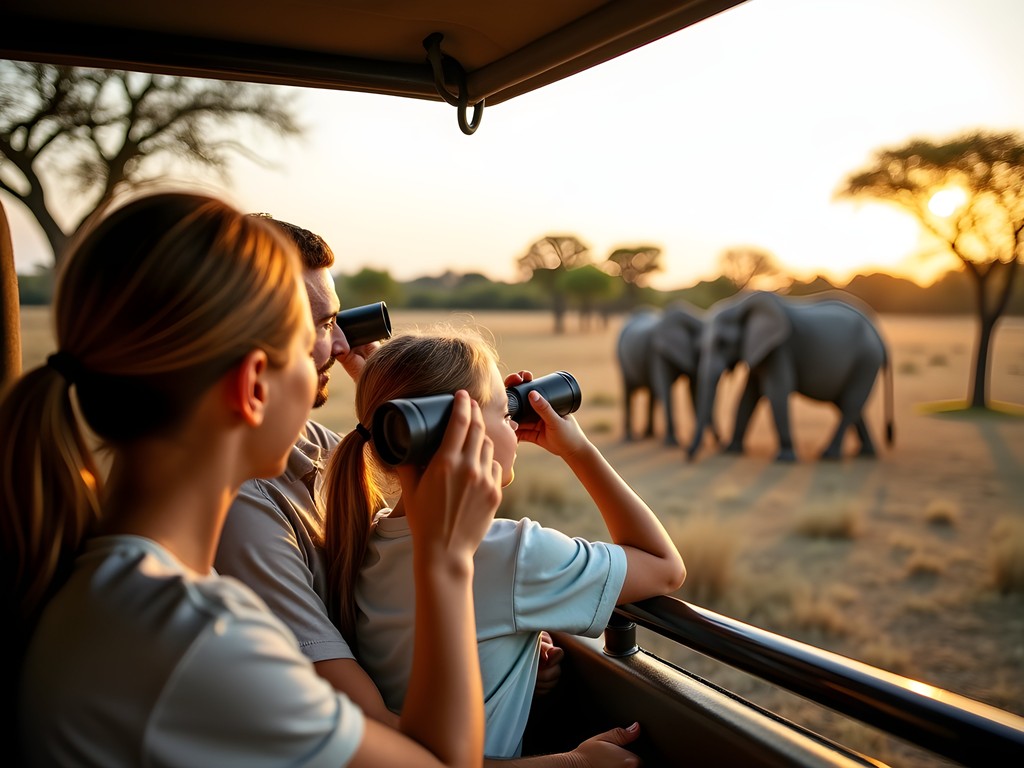
💡 Pro Tips
- Create a 'safari voice' game where children practice speaking in whispers during wildlife sightings
- Pack a small first aid kit with basics like antiseptic wipes, plasters, and anti-histamine cream for minor incidents
- Teach children the universal safari hand signals: raised fist for 'stop' and pointing finger for direction of sightings
Conservation Education: Making the Experience Meaningful
A family safari offers unparalleled opportunities for conservation education that transcends theoretical classroom learning. Having witnessed my wife's passionate environmental work in New Zealand, I've adapted her approaches to engage children with Kruger's conservation story.
The Kruger interpretive centers at Skukuza and Letaba provide excellent starting points. The Elephant Hall at Letaba, displaying the tusks of the 'Magnificent Seven' elephants, sparked profound discussions with our young companions about poaching and protection efforts. These centers contextualize what children observe in the wild, creating deeper understanding of ecosystem relationships.
I encourage families to participate in the citizen science initiatives available through the SANParks website and mobile app. During our trip, the children enthusiastically reported unusual bird sightings and monitored waterhole activity—simple contributions that connected them to real conservation work while developing their observation skills.
For evening entertainment at camp, I recommend the wildlife documentary series, which features several segments filmed in similar African ecosystems. Watching these after a day of personal wildlife encounters reinforces learning and provides broader ecological context. The children were delighted to recognize behaviors they had witnessed themselves earlier that day.
Make conservation discussions age-appropriate but honest. With younger children, focus on habitat protection and basic needs of animals. With teenagers, engage with more complex topics like human-wildlife conflict at park boundaries and climate change impacts on migration patterns. My experience covering environmental sporting initiatives has taught me that authenticity resonates—children appreciate being included in real discussions rather than receiving sanitized versions.
Perhaps most powerfully, connect conservation to cultural context. The communities surrounding Kruger have complex relationships with the park, including historical displacement and current economic dependence. Visiting cultural centers like Matsamo Cultural Village near Kruger's Malelane Gate helps children understand that conservation isn't just about animals—it's about people too. This holistic perspective mirrors my own journey from sports journalism to cultural documentation, recognizing that no environmental story exists in isolation from human experience.
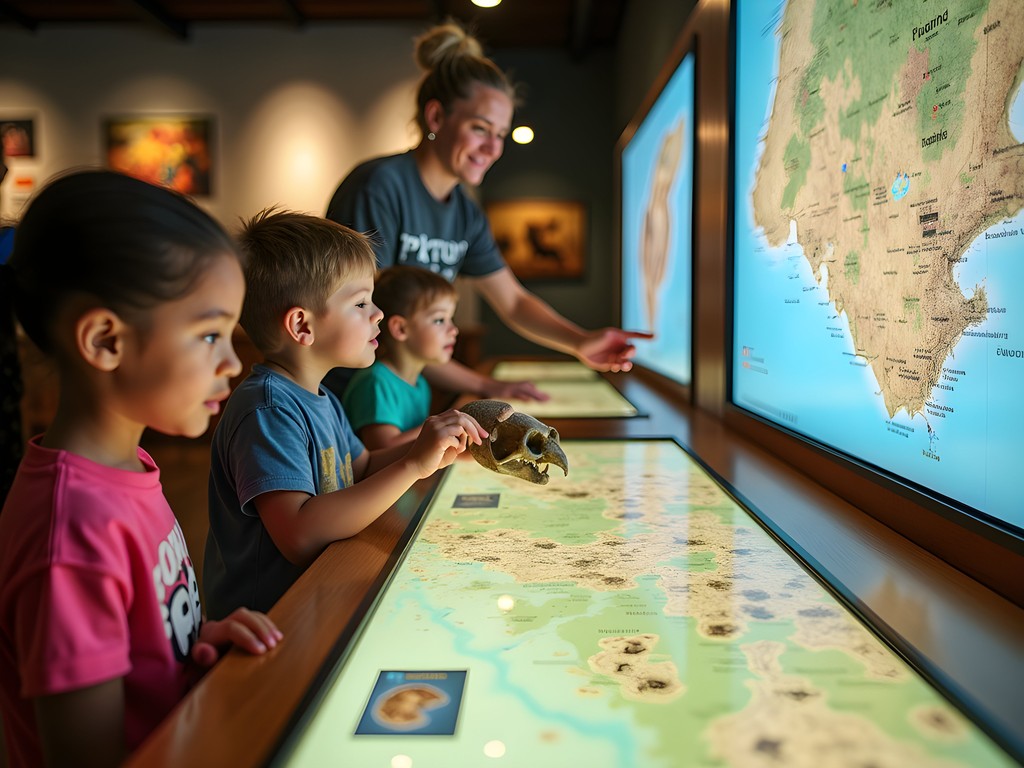
💡 Pro Tips
- Purchase wildlife identification cards that children can keep as souvenirs while learning species names and facts
- Encourage children to keep a safari journal combining drawings, observations and questions for rangers
- Visit the Skukuza Nursery to learn about indigenous plants and their importance to the ecosystem
Final Thoughts
As our week in Kruger drew to a close, I watched Hannah carefully pack her wildlife journal, now filled with sketches, ranger stamps, and pressed leaves. 'I'm going to be a conservationist when I grow up,' she announced with the certainty only a ten-year-old can muster. In that moment, I recognized the transformative power of family safaris—they don't just create memories; they shape futures. Whether your children follow through on wildlife career aspirations or simply develop a deeper connection to our natural world, the seeds planted in Kruger's rich soil will grow into something meaningful. The park has witnessed countless sporting events in its century-long history, but the most important game playing out is conservation, and by bringing your children here, you're helping recruit the next generation of players. Plan thoughtfully, engage authentically, and prepare for your family to return home forever changed by South Africa's wilderness cathedral.
✨ Key Takeaways
- Spring (September-November) offers ideal weather and wildlife viewing conditions for families
- Balance structured activities like game drives with downtime and child-led exploration
- Incorporate age-appropriate conservation education to transform the safari from entertainment to meaningful learning
- Rest camps provide the best value for families while offering essential amenities like pools and shops
📋 Practical Information
Best Time to Visit
Spring (September-November)
Budget Estimate
$2,500-4,000 for a family of four for one week
Recommended Duration
5-7 days
Difficulty Level
Beginner


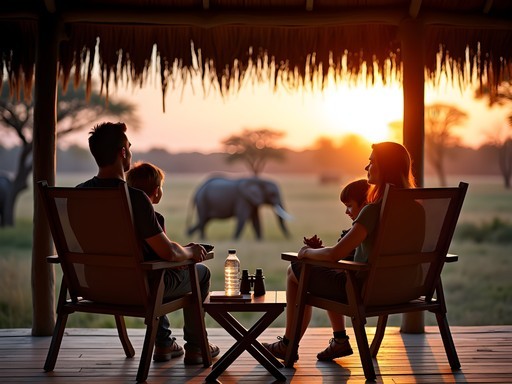
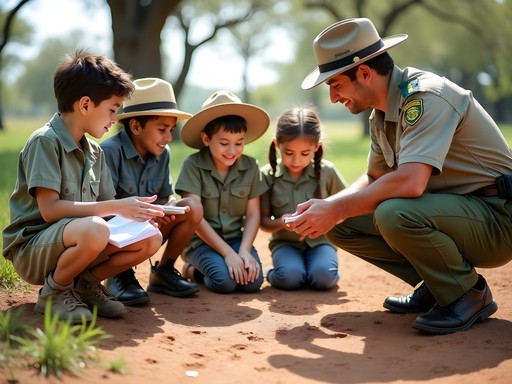
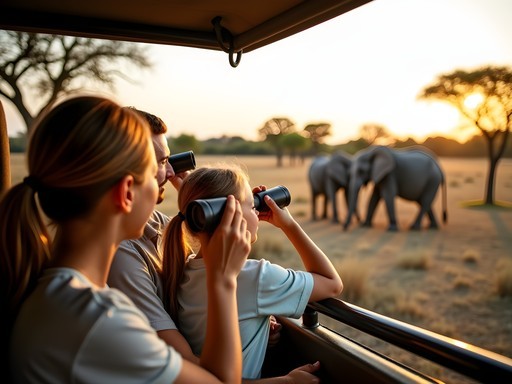



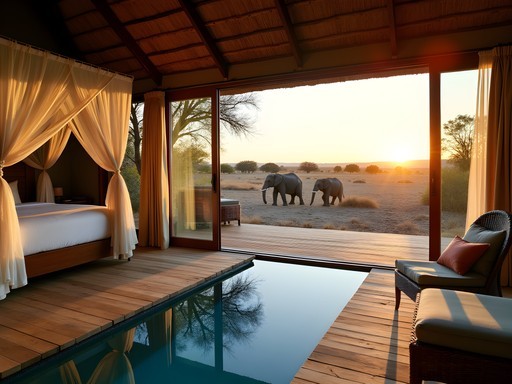

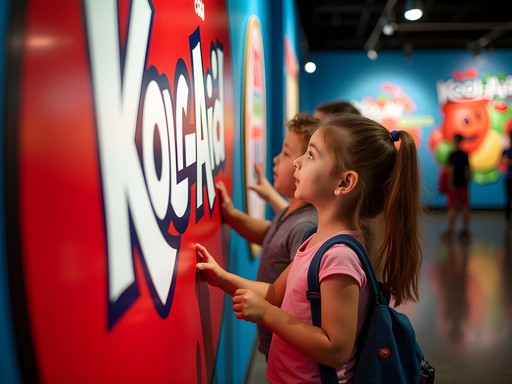
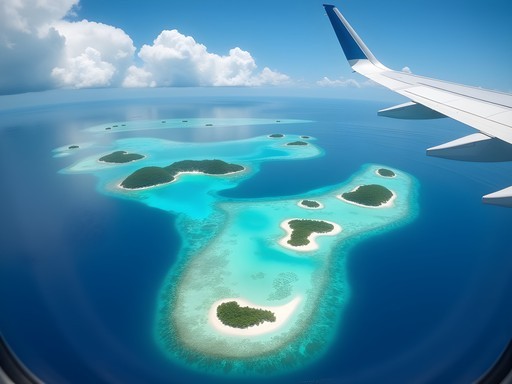
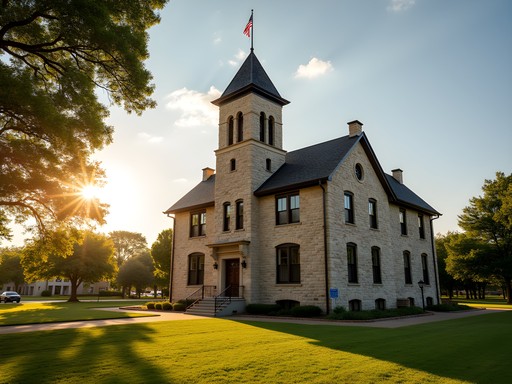

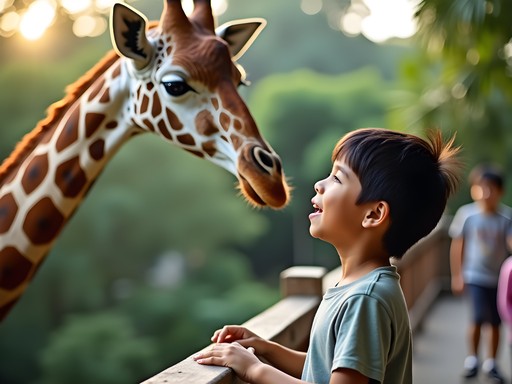

Comments
wandermood
Just booked our family trip for April after reading this! So excited to see my daughter's face when she spots her first elephant!
Timothy Jenkins
Excellent guide, Amit. Having done numerous family safaris across Africa, I'd emphasize your point about choosing the right accommodation. The private lodges bordering Kruger often provide specialized family programs that the public rest camps don't. We stayed at Sabi Sabi Bush Lodge which has their EleFun Centre specifically for children - complete with age-appropriate activities between game drives. While more expensive than the rest camps, these lodges offer a structured environment that helps children process and learn from what they're seeing. I'd also suggest families consider the shoulder seasons (April-May or September-October) when temperatures are moderate and crowds are thinner. The wildlife viewing remains excellent but you'll have a more relaxed experience.
wanderlustmaster
Going there with my 7yo nephew next month. How did the kids handle the early morning wake-ups for game drives? Any tips to keep them from getting bored between sightings?
Nicole Russell
Not the author, but I've done Kruger with my little cousins! Wildlife bingo cards were a HUGE hit - we made custom ones with animals they might spot. Also, letting them use a (supervised) phone camera to be the 'official photographer' kept them super engaged. The guides were amazing with kids too!
summerwanderer
Those sunrise safari photos are incredible! What camera did you use?
Amit Sullivan
Thanks! Just used my iPhone 15 Pro for most shots. The light in Kruger at dawn is photographer's gold!
summerzone
This brings back such amazing memories! We took our kids (8 and 11) to Kruger last year and it was absolutely magical. The wildlife journal idea is brilliant - our daughter filled hers with drawings and even pressed flowers from around the camp. One tip I'd add is to bring good binoculars specifically designed for kids. Our kids binoculars were a huge hit and kept them engaged during those long stretches between animal sightings. The Lower Sabie rest camp was perfect for families - we saw elephants right from our porch!
wandermood
Did you find the early morning drives too cold for kids? We're planning for next April and wondering about layers.
summerzone
Definitely bring warm layers for morning drives! We had fleece blankets that were perfect. By 9-10am it was warming up nicely though.
SafariMom2020
Just got back from Kruger with our kids (8 and 11) and this guide would have been SO helpful! One thing I'd add - the Berg-en-Dal camp was amazing for families. They have these incredible rock pools that kept our kids entertained for hours between game drives. Also, the sunset drives were worth every penny - our guide was incredible with the children, letting them use the spotlight to find nocturnal animals. We also packed small sketchbooks for wildlife drawings which turned into their favorite souvenirs. Hannah's wildlife journal mentioned at the end of the post is such a brilliant idea!
citynomad
Did you stay in the bungalows or camping? Trying to decide what would work best with young kids.
SafariMom2020
We did bungalows - totally worth it with kids! Having your own bathroom and AC made everything easier, especially after dusty game drives.
citynomad
Great post! How young is too young for a Kruger safari? My twins are 5 and I'm wondering if we should wait a couple years?
Amit Sullivan
Five is actually a good age! Just keep drives shorter (2-3 hours max), stay at camps with pools, and bring plenty of activities for downtime. The Safari Guide for Kids was a huge hit with Hannah's younger brother who was 5.
oceanwalker
We took our daughter at 4 and she loved it! Just bring snacks, a good pair of kids binoculars, and don't expect to do full-day drives. The camps with playgrounds were lifesavers.
oceanwalker
Love this! Planning to take my kids (7 and 9) next year. Bookmarking!
Hannah Woods
This brings back wonderful memories! I took my niece and nephew (8 and 11) to Kruger last year, and the experience was transformative for them. One tip I'd add is to bring good binoculars specifically designed for children - they're more durable and easier for small hands to hold. The Lower Sabie Rest Camp was perfect for us with its river views, and we found the early morning drives followed by afternoon pool time created the perfect balance. The Junior Ranger program was also a highlight - my nephew still talks about the tracking skills he learned. Amit, did you find any particular time of day was best for keeping the children engaged while still seeing wildlife?
Amit Sullivan
Thanks Hannah! We found early mornings (5:30-8:30am) worked best - the wildlife is active and the kids were still fresh and excited. By midday they'd get restless, so that's when we'd head back for swimming and activities at the camp.
Hannah Woods
That matches our experience exactly! Those golden morning hours were magical. Did you try any night drives? We were on the fence but decided our kids were a bit too young.
redfan
Just got back from Kruger with our twins (8) and this post would have been so helpful before we went! One tip for other parents - we found having a good pair of compact binoculars for each child made a HUGE difference in keeping them engaged during drives. We got them the kids binoculars which were perfect - lightweight enough for them to use easily but still decent quality. Also, the night drives were surprisingly good for the kids - they loved using the spotlight to find nocturnal animals and actually stayed awake the whole time! The Berg-en-Dal camp was perfect for families - the Rhino Trail kept our kids entertained between drives and the accommodations were comfortable.
Amit Sullivan
Great point about the binoculars, redfan! And I'm glad to hear Berg-en-Dal worked well for your family - it's one of my favorites for the Rhino Trail alone.
Venture X
Premium card with 2X miles, $300 travel credit, Priority Pass